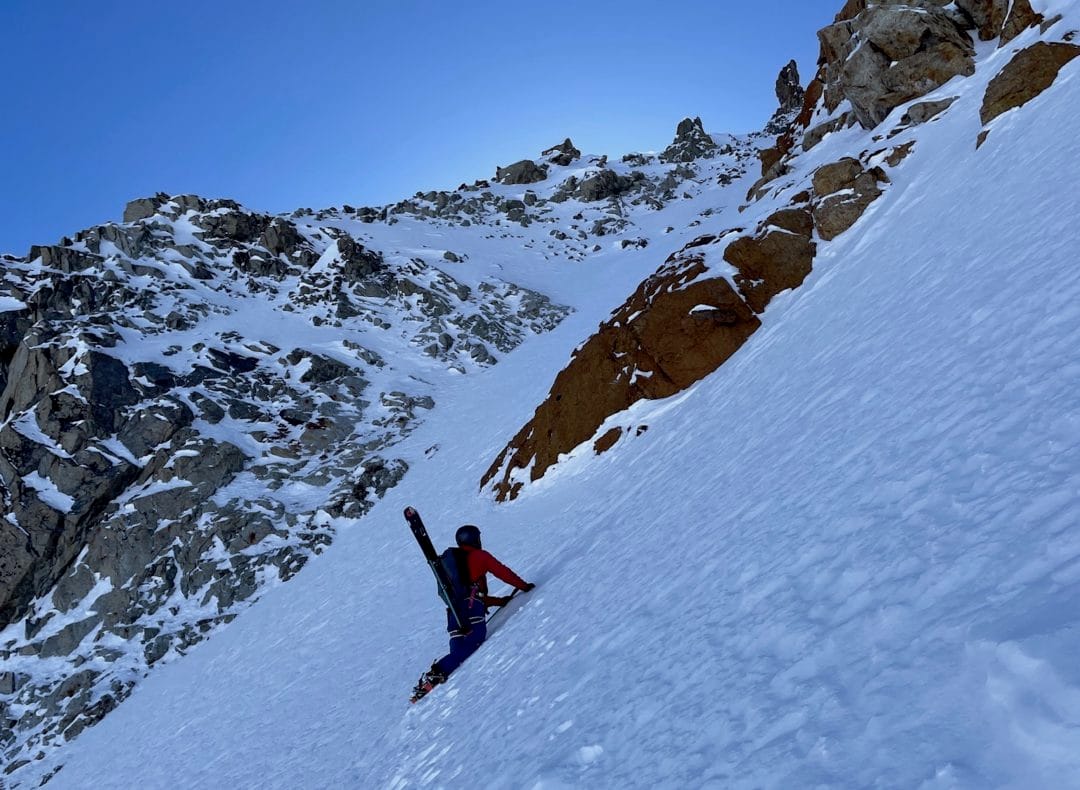
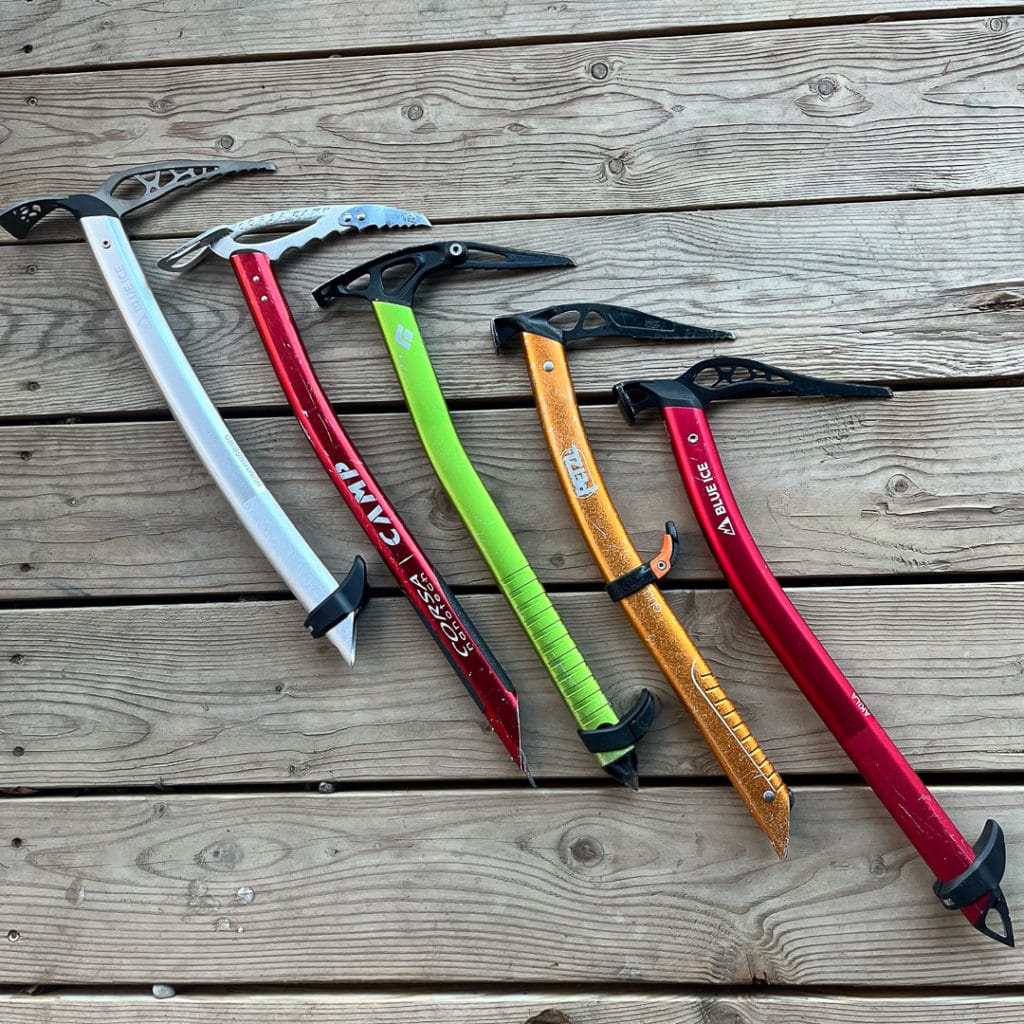
Ice axe anatomy
Pick: The “blade” of the axe, used to swing into ice or during a self-arrest maneuver. There are two main pick shapes available for ski axes. A classic curved pick works best for self-arrest and snow climbing, while a sharp, recurved pick works best for steep ice and névé climbing but is less predictable in a self-arrest situation.
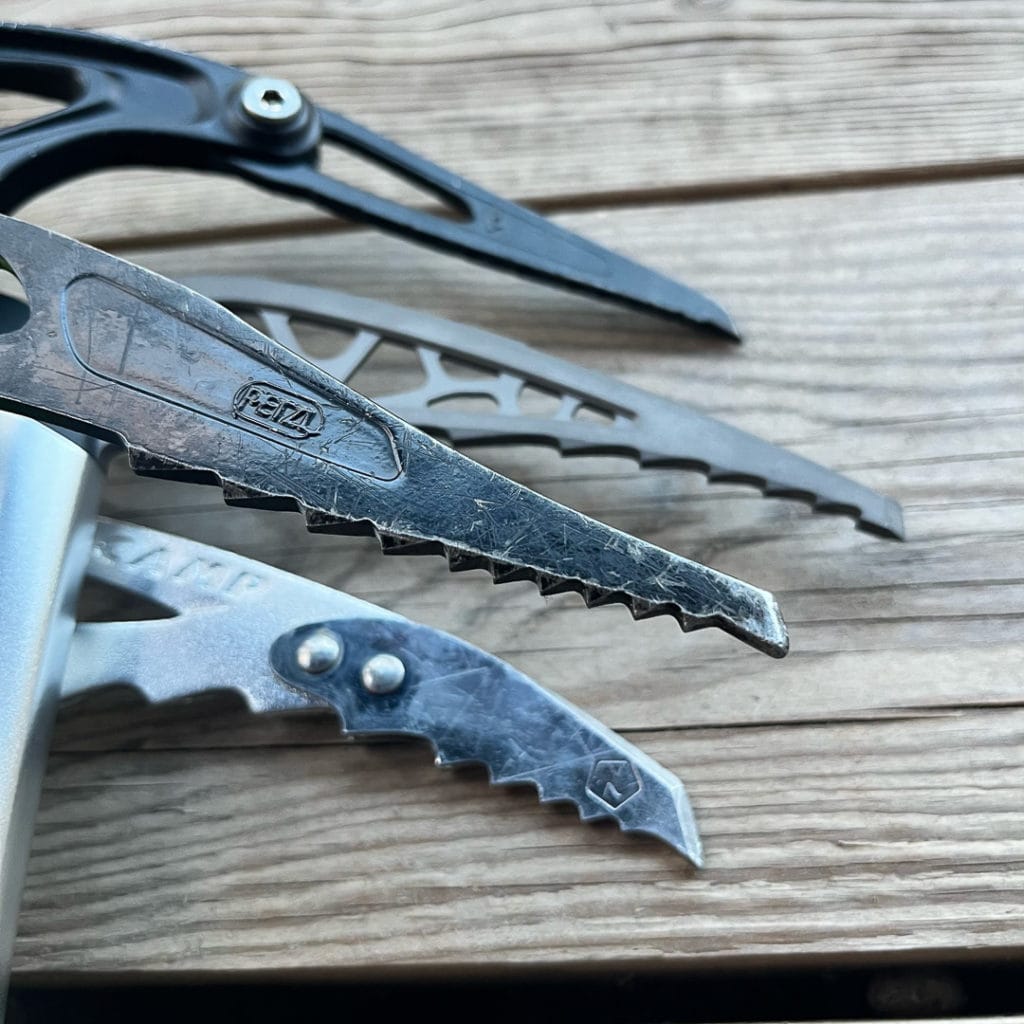
Adze: Most general mountaineering axes come with an adze. An adze works great for chopping a ledge, digging a snow anchor, or perhaps chopping steps if you forget crampons. Many modern ski axes have an adze that is too small to accomplish any serious excavation.
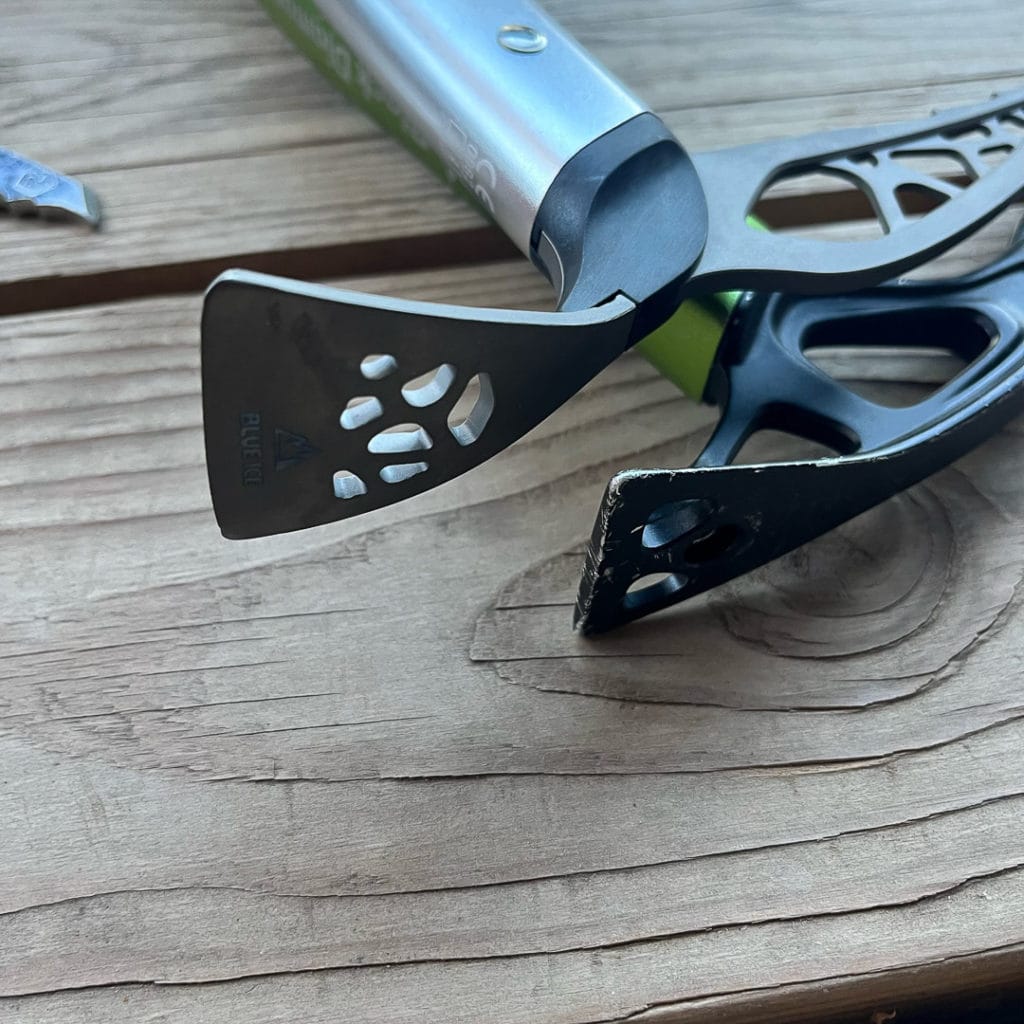
Hammer: Often available on more technical tools with a recurve pick. Useful for placing or checking piton anchors. Hammer quality is quite wide-ranging in the ski axe world, from excellent to small and weak.
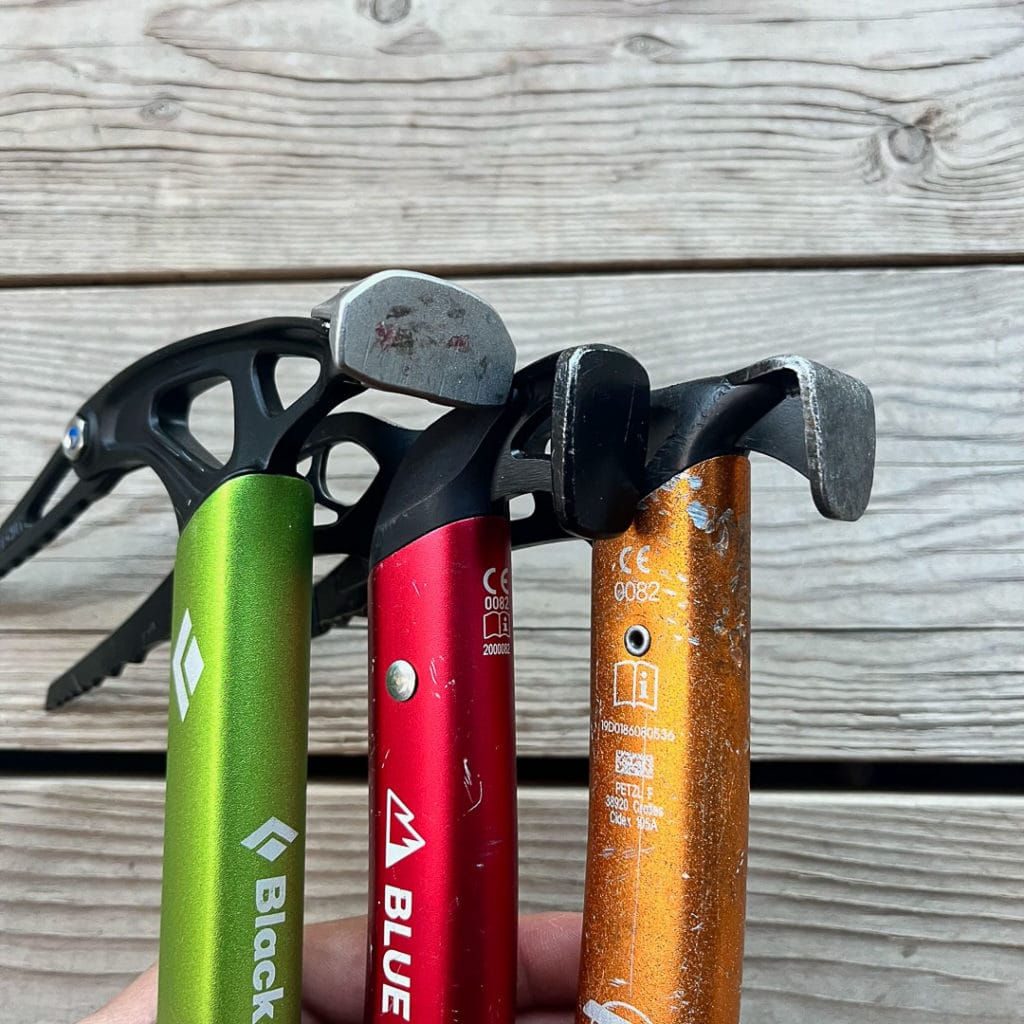
Shaft: A curved shaft provides some knuckle clearance when swinging into steeper ice. A straight shaft is better for plunging into snow. Curved tools often have an adjustable pommel/pinky rest to further improve ice climbing capabilities. Because we often only use our axes in steep terrain, short axes are easy to maneuver and save weight – no need for an axe longer than ~50cm for most skiing.
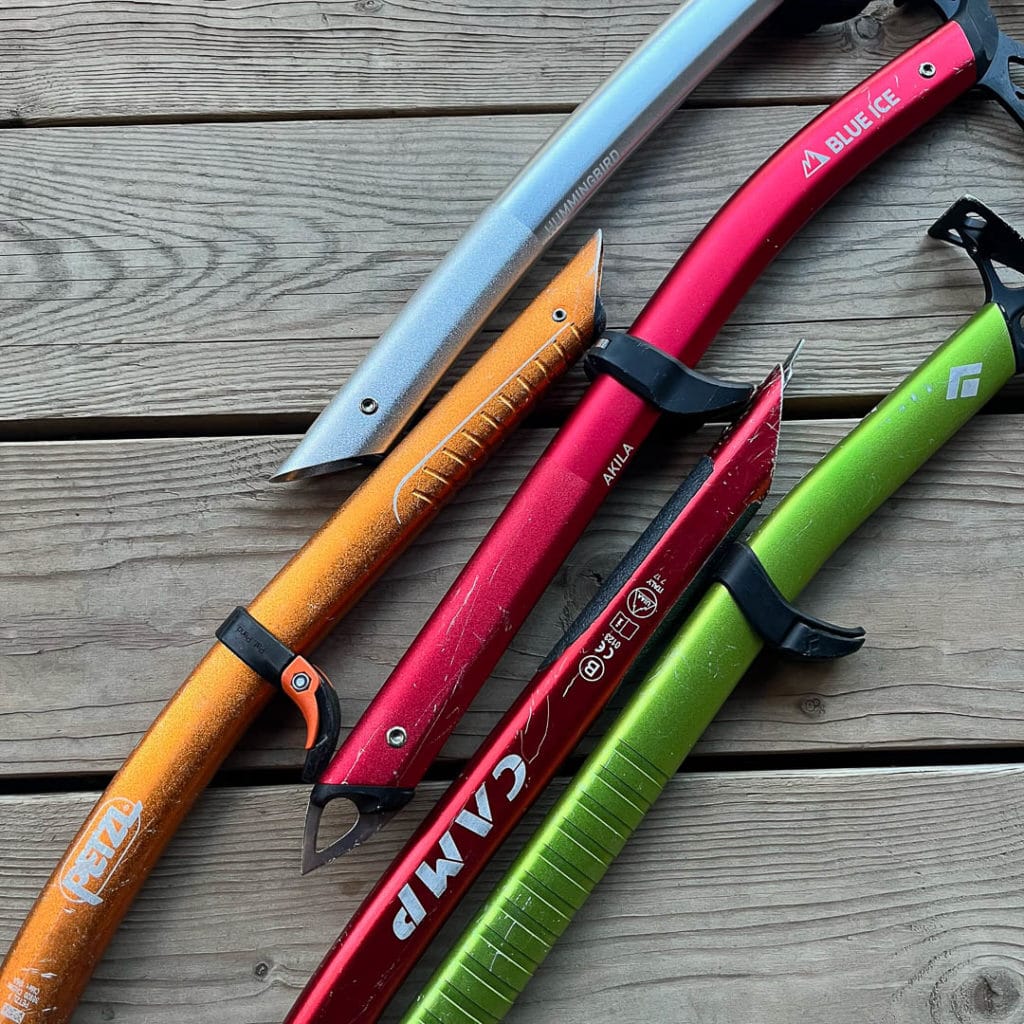
Spike: Again, a wide variety of spikes are available on ski axes. The lightest is a diagonal cut-off at the end of the aluminum shaft—this works fine in soft snow but is often useless in firm conditions. Many axes add some sort of steel end piece to improve plunging capability.
Ultimately, choosing an ice axe is all about compromise. An axe with a sharp, steel spike, effective hammer/adze, recurved steel pick and adjustable pommel (See Blue Ice Akila) is extremely effective but an inevitable weight gain relative to an axe with an aluminum head, cutoff spike, and tiny adze (see Camp Corsa). Last year, Black Diamond released the Venom LT—a Jack of All trades, but master of none. With a replaceable pick, removable hammer and pommel, plus a decent steel spike, it can be configured to work well for most outings; all while coming in under 250g in its lightest configuration.
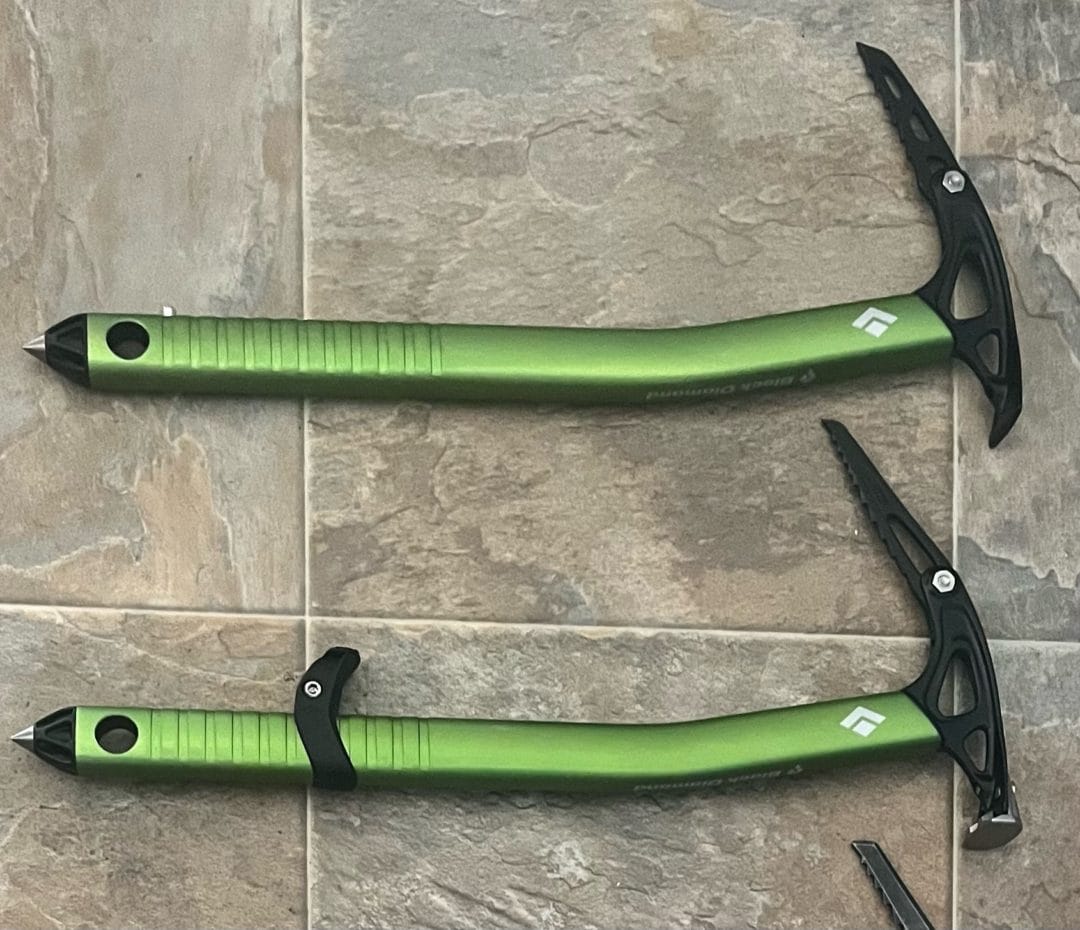
As the winter progresses, we plan to publish detailed comparisons of many of the top choices for technical skiing tools and ultralight mountaineering axes. Since the introduction of the Petzl Gully six or so years ago, the options for extremely lightweight highly capable ice tools have flourished. From the extremely light Ice Rock Idol to the heavier but rock solid Blue Ice Akila, we are working on gathering all the relevant options to put to the test this season






Leave a Reply
You must be logged in to post a comment.